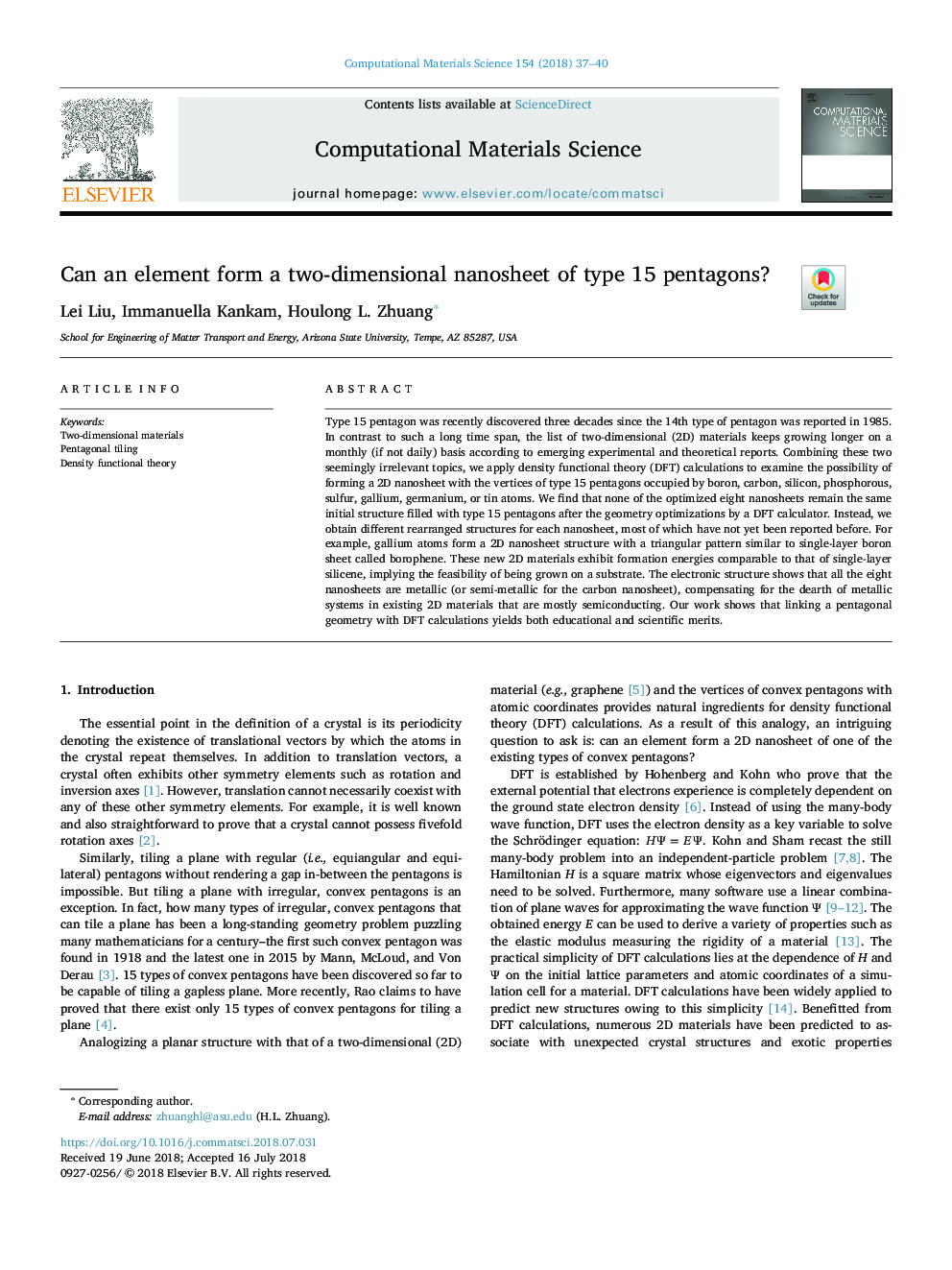| کد مقاله | کد نشریه | سال انتشار | مقاله انگلیسی | نسخه تمام متن |
|---|---|---|---|---|
| 10155820 | 1666365 | 2018 | 4 صفحه PDF | دانلود رایگان |
عنوان انگلیسی مقاله ISI
Can an element form a two-dimensional nanosheet of type 15 pentagons?
ترجمه فارسی عنوان
آیا یک عنصر یک نانوساختار دو بعدی از پنجگانه نوع 15 را تشکیل می دهد؟
دانلود مقاله + سفارش ترجمه
دانلود مقاله ISI انگلیسی
رایگان برای ایرانیان
کلمات کلیدی
مواد دو بعدی، کاشی پنتاگون، تئوری کاربردی تراکم،
موضوعات مرتبط
مهندسی و علوم پایه
سایر رشته های مهندسی
مکانیک محاسباتی
چکیده انگلیسی
Type 15 pentagon was recently discovered three decades since the 14th type of pentagon was reported in 1985. In contrast to such a long time span, the list of two-dimensional (2D) materials keeps growing longer on a monthly (if not daily) basis according to emerging experimental and theoretical reports. Combining these two seemingly irrelevant topics, we apply density functional theory (DFT) calculations to examine the possibility of forming a 2D nanosheet with the vertices of type 15 pentagons occupied by boron, carbon, silicon, phosphorous, sulfur, gallium, germanium, or tin atoms. We find that none of the optimized eight nanosheets remain the same initial structure filled with type 15 pentagons after the geometry optimizations by a DFT calculator. Instead, we obtain different rearranged structures for each nanosheet, most of which have not yet been reported before. For example, gallium atoms form a 2D nanosheet structure with a triangular pattern similar to single-layer boron sheet called borophene. These new 2D materials exhibit formation energies comparable to that of single-layer silicene, implying the feasibility of being grown on a substrate. The electronic structure shows that all the eight nanosheets are metallic (or semi-metallic for the carbon nanosheet), compensating for the dearth of metallic systems in existing 2D materials that are mostly semiconducting. Our work shows that linking a pentagonal geometry with DFT calculations yields both educational and scientific merits.
ناشر
Database: Elsevier - ScienceDirect (ساینس دایرکت)
Journal: Computational Materials Science - Volume 154, November 2018, Pages 37-40
Journal: Computational Materials Science - Volume 154, November 2018, Pages 37-40
نویسندگان
Lei Liu, Immanuella Kankam, Houlong L. Zhuang,
